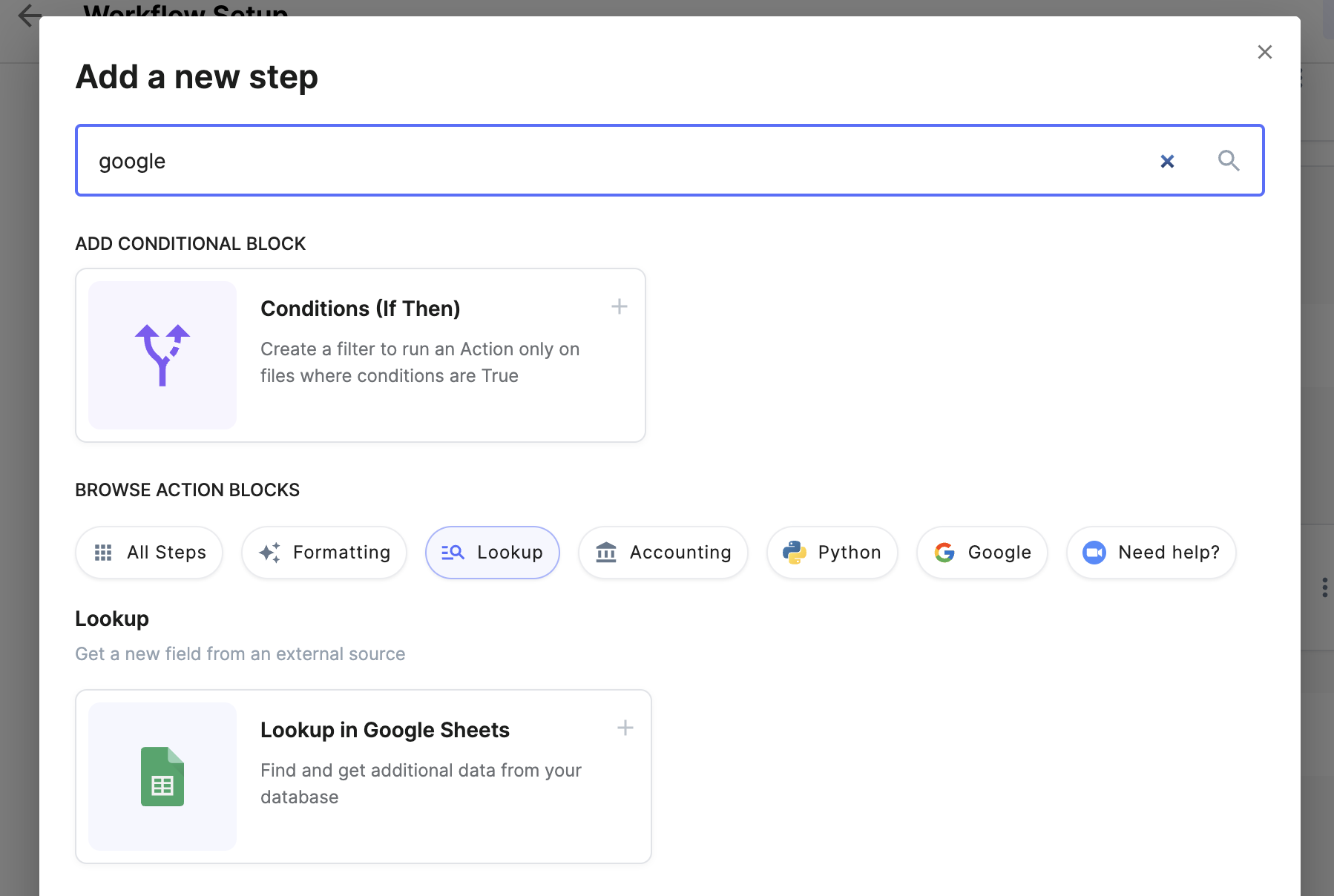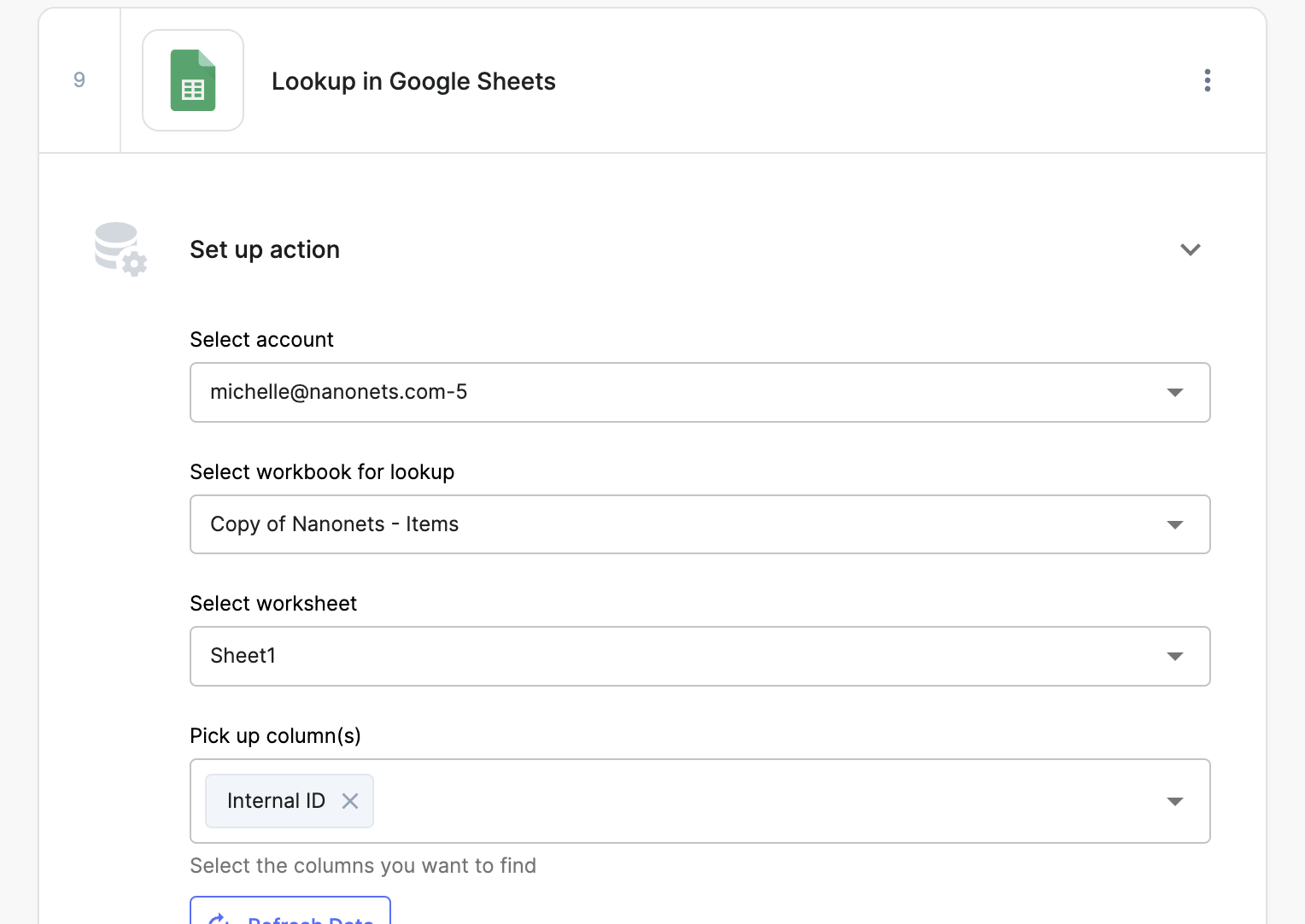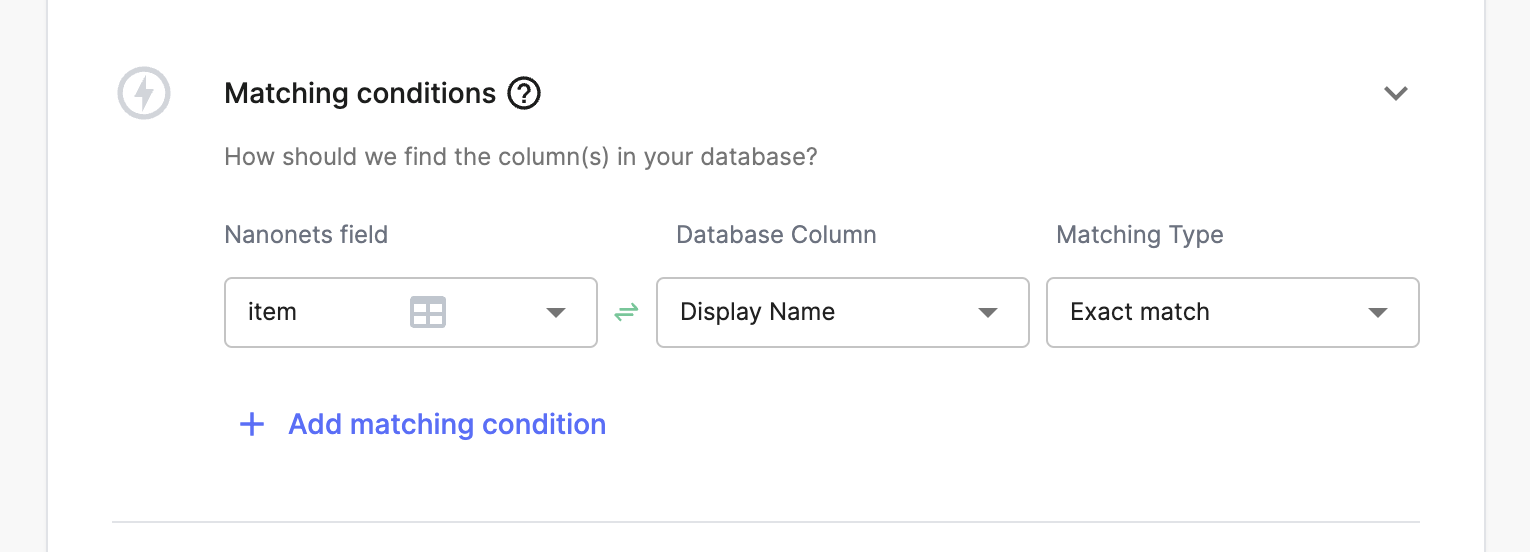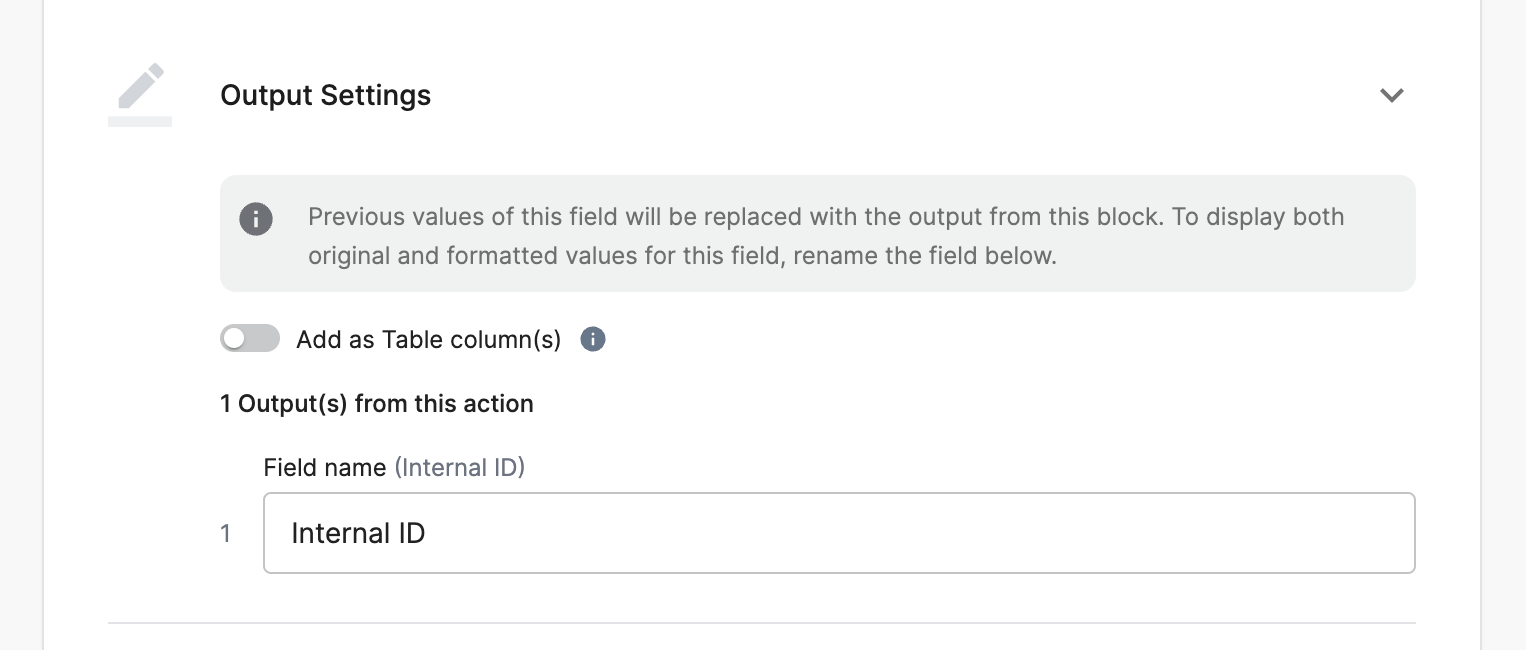Google Sheet Lookup
What this does
Lookup values based on column mapping stored in a Google Sheet. Let's say you are processing Purchase Orders for export to Netsuite (or any other ERP). You may have a list of "internal vendor code" per vendor, and you store this mapping in a Google Sheet. You want to lookup and import "internal vendor code" against each PO. Using the Nanonets Lookup in Google Sheets block, you will be able to automatically assign a "internal vendor code" to each PO before it is exported to your ERP.
How to set up Lookup in Google Sheets
-
Add the lookup step to your Workflow
-
Open your Workflow.
-
Go to Data Actions > Add a new step
-
Search for "Lookup in Google Sheets"
-
The block will be added to your Workflow.

-
-
Connect the account and select columns you want to pick up
- Connect your Google account where the Sheet is located. Please make sure you have access to the Sheet you want to lookup from.
- Select the Spreadsheet > Select Sheet
- Select the names of the Columns you want to lookup. (eg: Internal ID). You can select multiple.

-
Set up the matching logic (at least one is required): Specify the criteria based on which Nanonets will pick up the correct value. E.g: "Item" on the invoice should match "Display name" (Col A) in your Sheet. Then Nanonets will pick up "Internal ID" (Col B) from the Sheet. Follow the steps below to set up matching conditions:
- From the Nanonets field dropdown select the field to use as a unique identifier
- In the same row, select the Google Sheet Column that corresponds to the Nanonets field you just selected.
- You can choose a matching type. The default matching type is Exact match.
- You can add another condition if required. The default operator is AND.

- Choose Lookup field name (optional)
By default, the name of the new lookup field added to Nanonets from the Sheet will be the same as the column name in the Sheet. You can customise this by typing in a new name.

- Click on Done to save your block!
Frequently asked questions
What are Matching types:
Exact match: The match will only be considered TRUE if the column and field extracted are an exact match. You can add multiple matching conditions with an exact match
Fuzzy match (close match): The match will be considered True if the column and field extracted are a close enough match. You can only add one matching condition to do a fuzzy match
*(2) Multiple matching conditions:
You can add multiple matching conditions if required. The file will be passed only if all matching conditions were met.
Updated 8 months ago
